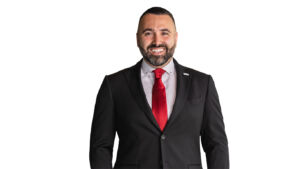As U.S. President Biden announced the student loan debt forgiveness program on August 24, 2022, a $10,000 student loan debt relief program became available to those with annual personal incomes of less than $125,000 or annual family incomes of less than $250,000. It is also for those who have received a pell grant can get rid of their $20,000 in student loan debt.
For working-class and middle-class families, this policy was unquestionably good news, especially when taken in conjunction with the inflation situation of recent years. Since college is typically expensive for American students, student loans differ from scholarships and other forms of financial aid in that they typically require repayment. This policy would undoubtedly significantly lessen the financial burden and give people the chance to pursue higher education.
So what is a good way for college students to apply for student loans and enjoy federal policy benefits?
You can apply for this project on the FAFSA (Free Application for Federal Student Aid) for free because federal student loans have more stable interest rates than private loans. The FAFSA system must be used to apply for this need-based financial aid, which is provided by the federal government of the United States. Roughly 22 million people in the US had applied in 2022, and there are no additional fees involved in any part of the application process every year. The requirements are as followed:
• Applicable to U.S. citizens and green card holders, not available to international students;
• At least part-time or full-time classes are required each semester;
• Proof of qualifications to prepare for admission to the degree;
• Maintain good academic performance in college;
• Male students aged 18-25 need to register for military service;
Meet anyone of the academic qualifications: possess a U.S. or foreign high school diploma or U.S. high school equivalency certificate/completed higher education in a federally recognized home teaching environment/pass the institution’s ability-to-benefit test results
There are three main categories in terms of specific classification, and students can choose according to their needs:
Federal Direct Subsidized Loan – This federally subsidized student loan is available to eligible students. The maximum amount for this type of loan is $3,033 (per six-month course), depending on eligibility, education program, grade level, and prior loan debt under the program.
Federal Direct Unsubsidized Loan – This federal unsubsidized student loan is offered to eligible students. The maximum amount for this type of loan is $8,233 (per six-month course), depending on eligibility, education program, grade level, and prior loan debt under the program.
Federal Undergraduate Direct Parent Loan (PLUS) — This federally guaranteed parent loan is offered to parents of dependent students through qualifying lenders participating in the program. Parental eligibility is determined by credit requirements established by the lender. Parents who meet lender requirements can borrow up to the difference between the cost of education and any financial aid the student receives.
After submitting the FAFSA application, you need to wait for the review of the Federal Ministry of Education. Generally speaking, they will send a student aid report to students and schools in about three weeks. Based on the information you provided, the report will include a list of the families’ deductible funds. The school will begin distributing the student aid report in early April after ensuring that the information is accurate and sending it to the financial aid office. This report will explain the cost of the student for one academic year as well as the types and options of financial aid that are available. After receiving the letter, the student can select the type of subsidy they desire, sign it, and return it to the school. The school will then provide the selected type of subsidy.
The tuition fee here generally includes fees for room and board, books, miscellaneous studies, transportation, and etc in one year. The family deductible money depends on the family’s financial situation, and generally, the higher the individual or parent’s assets or income, the less the benefit will be. Those who do not meet the standard for full-time students will also receive only a partial subsidy.
As for the repayment options, here are a few different options to choose from:
• Repayment at 10% of disposable income for 20 years and 25 years for graduate students;
• 15% of disposable income (10% for loans after July 1, 2014) for 25 years (20 years for loans after July 1, 2014)
As the data collected in August 2022, more than 43 million people in the United States were saddled with student loans, many people still had not paid off their high loans after graduation and worked for more than ten years. In recent years, due to the pandemic and economic recession, many people have no income. Backing up loans has left many people or families unable to breathe. It is a good thing that college students currently have a favorable loan policy. In addition, there are also scholarships for students to apply for their schooling. You can find them on the official websites of schools, or some other websites like CouponBirds, which also offers scholarship applications once a year.
Additionally, to better access to higher education, students can also excel themselves in grades and do not need to consider tuition fees as a limitation when applying to colleges. Many top universities in the United States are willing to provide scholarships to outstanding students. You can study hard in the early stages when applying for a university, as well as enrich yourself, better prepare your university application materials. They can all improve your bargaining power and attractiveness, and then you can choose your favorite school without worrying too much about your studying cost. If you have already entered the university, excellent academic performance each semester can also be an advantage in applying for scholarships.




